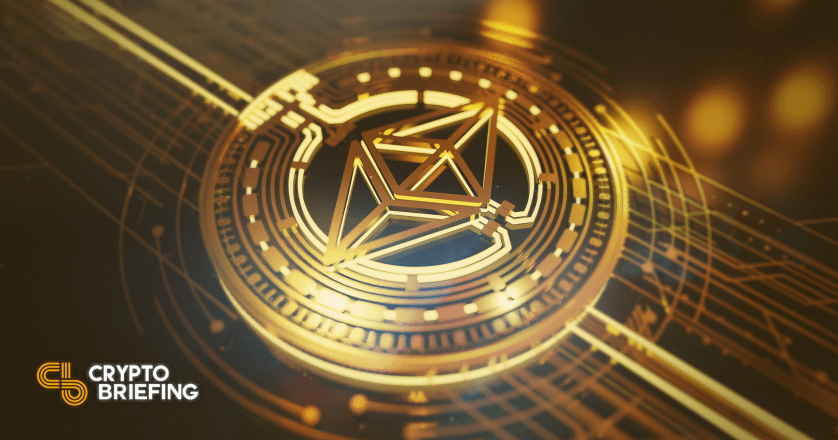Ethereum Successfully Launches Berlin Hard Fork
Ethereum’s latest update went live at block 12,244,000 this morning.

Key Takeaways
- Ethereum’s Berlin hard fork has gone live.
- The upgrade included several Ethereum Improvement Proposals focussed on changes to gas costs and transaction types.
- Ethereum will follow Berlin with its highly anticipated London hard fork this summer.
Share this article
The second-biggest blockchain by market cap completes another major upgrade.
Ethereum Berlin Fork Launches
Ethereum has just completed its Berlin hard fork.
The update went live on Ethereum’s block 12,244,000 this morning. Initially confirmed on Mar. 8, the fork comprised four Ethereum Improvement Proposals. Abbreviated as “EIPs,” anyone can submit an Ethereum Improvement Proposal, and those accepted by the community get implemented into the blockchain.
The first was EIP-2565, which lowers the gas cost for modular exponentiation, otherwise known as the “ModExp” function. The fork also included EIP-2929, which Vitalik Buterin and Martin Swende put forward. EIP-2929 increases gas costs for state access operations (otherwise known as “opcodes”) and adds security improvements to the blockchain. The update also introduced EIP-2718 and EIP-2930, which involve defining a new transaction type for future transactions and adding a new transaction type that includes access lists.
The Berlin fork involves several complex technicalities, but it had been anticipated across the community nonetheless. Many key Ethereum supporters took to Twitter to celebrate the milestone as it happened this morning.
Berlin is here 🇩🇪 https://t.co/CvL9rWeOuc
— timbeiko.eth (@TimBeiko) April 15, 2021
Welcome into Berlin 🙂 #Ethereum
— Péter Szilágyi (karalabe.eth) (@peter_szilagyi) April 15, 2021
There were also two watch parties, hosted by ETHStaker and Ethereum Cat Herders, two of Ethereum’s strongest communities.
EIP-1559 Looming
Berlin’s completion takes Ethereum one step closer to London, the hard fork that will include its long-awaited EIP-1559 update. Tim Beiko, the coordinator for the various implementers and researchers working on EIP-1559, explained to Crypto Briefing that EIP-2929 and EIP-2718 are essential “prerequisites” in the lead-up to the update.
EIP-1559 involves introducing a base fee to transactions, which represents the minimum amount of gas a transaction needs to get added to a block. This fee will then get burned, which will in turn reduce the supply of ETH (Beiko has previously referred to it as an “ETH buyback” proposal). It should also make the cost of transactions easier to predict—one problem with the current mechanism is that gas prices get entered as an estimate, which means many users overpay for transactions.
Due to the improvement it’s expected to make on Ethereum’s monetary policy, EIP-1559 is the network’s most anticipated update since the Beacon Chain launch. However, some miners have opposed the update, arguing that it will threaten the security of the network. It’s expected to ship in July or August.
The merge phase of Serenity will follow the London hard fork. The Beacon Chain will be docked to Ethereum mainnet, marking the network’s long-awaited transition to Proof-of-Stake. Ethereum researcher Justin Drake recently ran a poll on when Proof-of-Stake could feasibly go live, to which Vitalik Buterin and others responded in favor of shipping the update this year. Drake told Crypto Briefing that he was “confident” it will launch in 2021 at the time.
The Serenity roadmap will finally see 64 new shard chains go live, marking the completion of Ethereum 2.0.
With various Layer 2 solutions also in development, it’s been a big year for Ethereum so far. The action has been reflected in its price: it currently has a market cap above $283 billion, with ETH trading at $2,446. That’s about 12.4% of the whole cryptocurrency market.
Disclosure: At the time of writing, the author of this feature owned ETH and several other cryptocurrencies.
